From old-school modest renditions to new-age bacon-stuffed crepes, the South Indian staple, dosa, is being reimagined faster than it once was on the streets
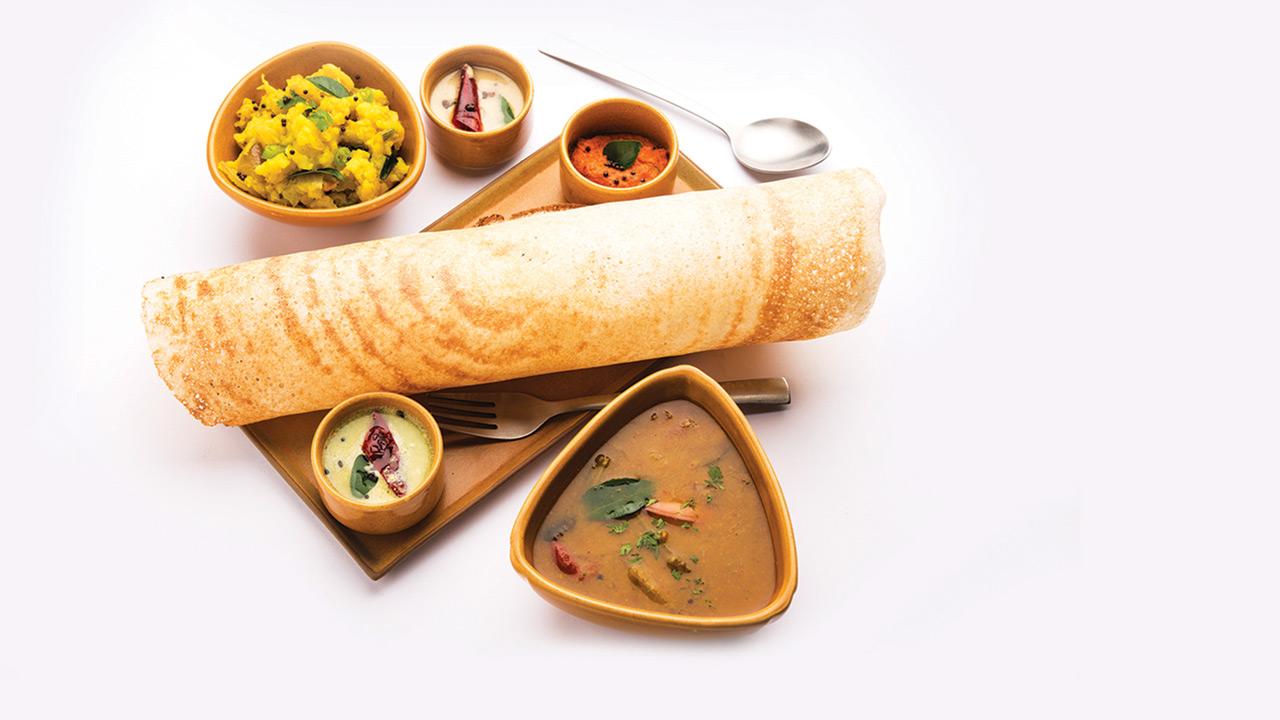
Representational pic
At stand by Coffee in Worli’s Kakad Estate, the humble dosa has been given a chic update. Served like a crepe, the multigrain dosa is stuffed with marinara sauce and cheese, called Goodfella. There’s also a Kejriwal and a Florentine, which is precisely what you would expect them to be. The former is a version of the iconic Kejriwal toast in dosa form; the latter is a take on Florentine eggs, complete with baby spinach, mushrooms, and a cheese-stuffed egg, all topped with a sunny-side-up egg. Each dosa feels familiar; it’s simply flipped.
A few kilometres away in Matunga East, the old-school crowds at Shree Sunders [temporarily closed] continue to order Methi dosa, Ragi dosa, and Malli (green chutney mixed in the batter) that have existed quietly for over three decades without the Instagram glare: no mayo, avocado or goat cheese in sight. And yet, the queues snake out the door on Sunday mornings.
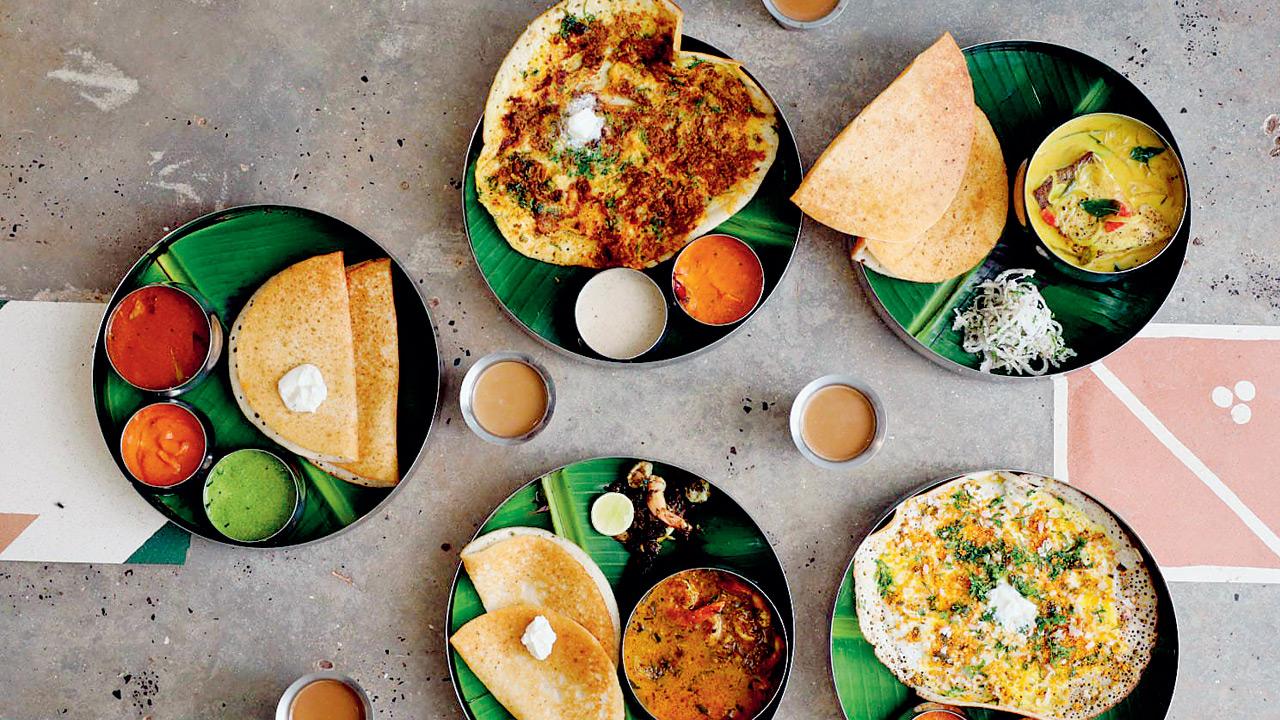
Dosas at We Idliwale include traditional non-vegetarian variants
Between the two lies a cultural shift: the dosa, a comfort dish that once received a new look with veggies, cheese, and Schezwan chutney on the streets, is now undergoing its second makeover. It’s being picked up by new-age cafés and given a modern remix. One that doesn’t quite look like what your amma served at 9 am with kaapi.
At Blondie in Bandra, for instance, the dosas are Mangaluru-style benne dosas and come in variations like BBQ Jackfruit, Breakfast (with eggs and an option of bacon), Avocado, and Prawn Thecha. Over at Daily Dosa, Andheri, the menu leans playful with dosa cones, wraps, and even tacos rolled up with global stuffing like a Chipotle Quesidosa, and desi ones like a Calcutta Chilli Chicken Cone.
So why take away the potato from the dosa? “Potato is too ordinary,” says executive chef Parveen Singh Rawat of Blondie. “The dosa is essentially a type of bread. Right now, people like a benne dosa, but not many places offer it. So, we thought, we will bring it forward,” he says.
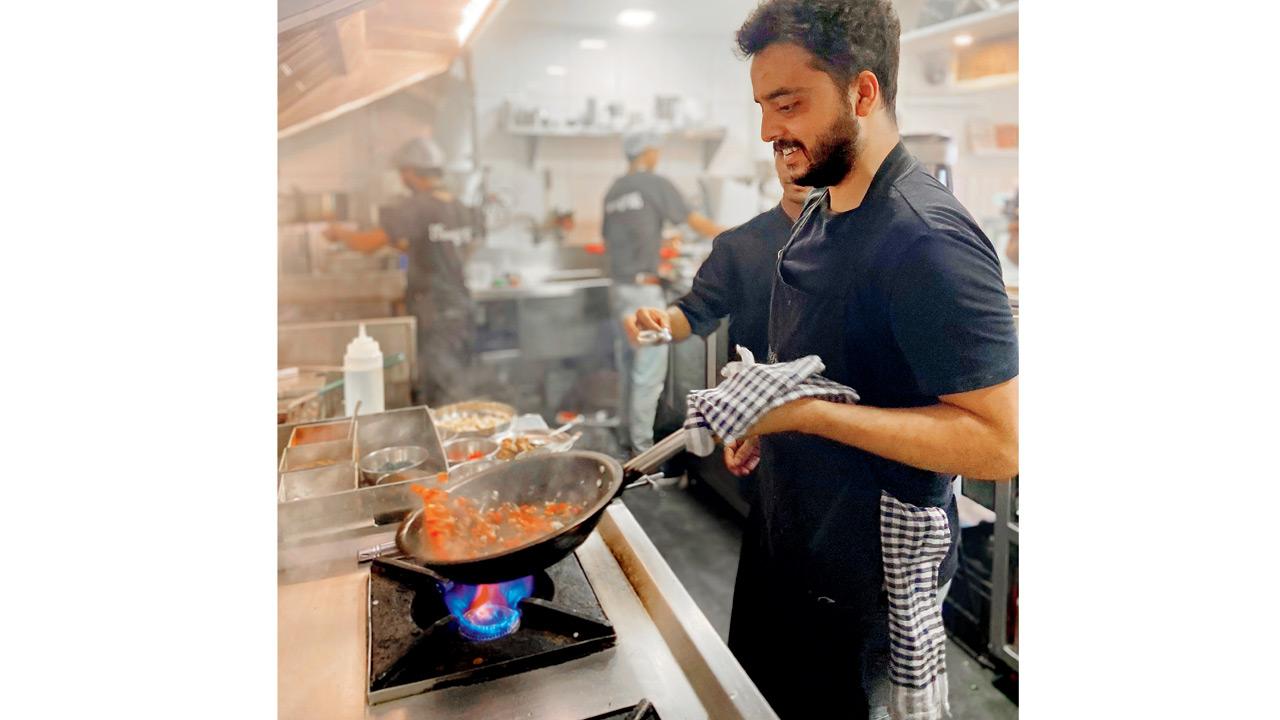
For many, these interpretations don’t feel forced. “It still needs to taste like dosa,” says Chef Rutudhwaj Mohite of Stand By Coffee. “We wanted our menu to reflect the way many of our customers eat today. I can’t serve ginni dosa at a café. I need to offer something fair for the price, something healthier but still comfortable,” he says. It’s why, along with his co-chef Sheal Khan, they worked out multigrain dosas with ragi in the batter, that can be played around with.
Cafés see it as a new avatar of toast: a versatile base that can hold anything from smashed avocado to cheddar. Mohite adds, “With a single dosa base, you can create multiple high-margin dishes: savoury, spicy, or even sweet.” It’s simple, affordable, highly adaptable, and already loved across generations. It’s also gluten-free, crisp yet light, and photogenic enough to earn a spotlight on the ’gram.”
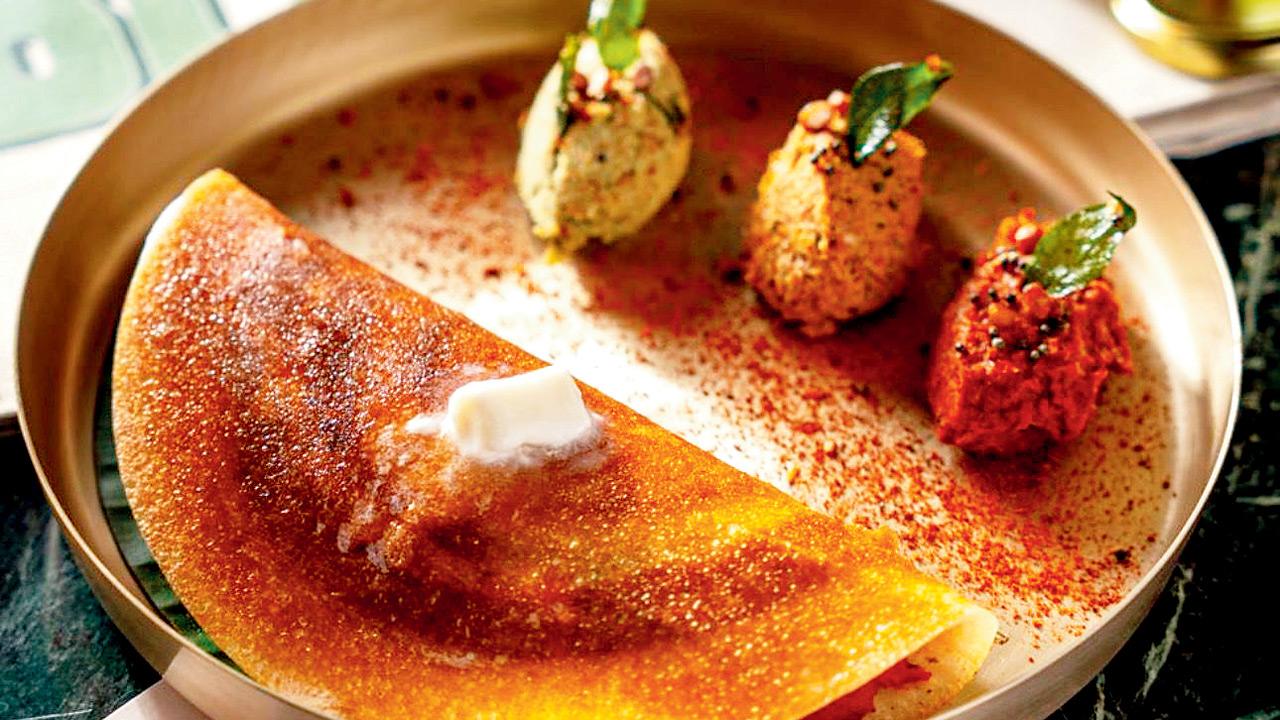 BBQ JACKFRUIT
BBQ JACKFRUIT
Places that have been doing this all along, like Shree Sunders, have never felt the need to compete with plain masala or Mysore dosas. Their menu proudly includes both.“I was young and had many ideas,” says Sachidanand Shetty, owner of Shree Sunders in Matunga East. “This was almost 30 years ago. I researched ingredients and textures to offer something different because people always want something new,” he says.
 Goodfella Dosa
Goodfella Dosa
Ever since, Methi dosa (with kasuri methi in the batter) and Chettinad (with sabudana pearls in the batter, called so because the Chettiars brought sabudana to India), have existed on the menu along with traditional but rare offerings like an Adai and Pink Adai (made with beetroot on Sundays only), and several variations that nod to home-style innovation rather than restaurant trend-chasing.
Shetty says the reason for innovation was that he wanted a space to channel his creative mind. But how did he convince customers to choose his experimental ones? Perhaps because creativity in dosas has always existed. “Dosa, what you eat at restaurants, is anyhow commercial. Home-made dosas are smaller, thicker… they look more like utappa,” he says.

Pink Adai Dosa
In Pune, We Idliwale and its bar-forward space, We Idliwale Barroom, changed the way the city ate South Indian food by serving it as it’s eaten in homes. The plates of idlis and dosas served alongside non-vegetarian curries were traditional at their core. Still, they left Punekars calling the food ‘fusion’ before being educated about its roots by the owners. Chicken or Prawn Pepper Fry Dosse, Motte Dosse (egg), Nellore Dosse, Keri Dosse (mutton keema) are some of their offerings. These may seem experimental, but they are not. “At the start, people found it different. For some, it still is. We still have people who are intimidated and don’t understand why we serve korma or mutton curry with a dosse,” he says, adding that patrons are easily converted because all that matters is that the food is delicious, “ says Chef Abhishek Joshi of We Idliwale and Barroom.
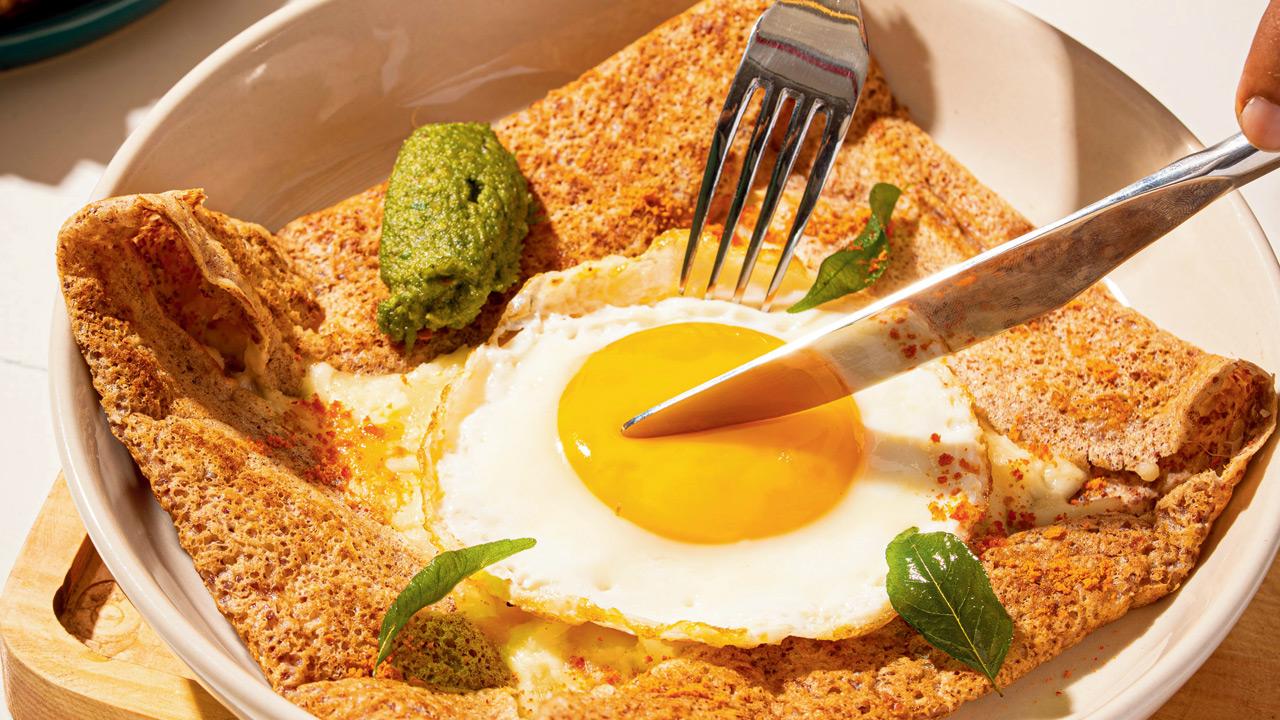
Kejriwal Dosa
This ‘home-style’ food now has many fans. “My style has always been to serve what I grew up eating,” he says, adding, “Most new dosas are about the Bengaluru style, which is starkly different. Our dosas are closer to the Tamil Nadu style, and we were also more about putting meat in them, and how it’s traditionally done.”
When it comes to dosa, most people enjoy tradition. The queues outside Matunga’s many Udipi restaurants are proof. Some new-age spots — like Benne in Bandra — have managed to garner that kind of crowd with their simple offerings like benne dosa and thatte idli that Mumbaikars can’t get enough of. The café, which now has a branch in Juhu as well, gets a lot of love on Instagram and sees a queue through the day.
Of course, there’s a limit to what you can do before a dosa stops being, well, a dosa. Joshi believes that one has to find a balance between technique and tradition. “We serve bacon with podi on it, but I’d never put bacon in a dosa,” he says.
Mohite, whose multigrain dosas have found a strong following among health-conscious diners says, “This isn’t a trend — it’s inspiration-driven. They’re naturally gluten-free, low-fat, and high in fibre and protein. Our Gun Powder and Podi Masala dosas are top sellers at Stand By.”

Parveen Singh Rawat
Perhaps, the love for dosas and their popularity is more cultural than culinary. Indian cafés are embracing desi staples, probably because there’s a shift in the diner’s mindset too. Today’s patrons are proudly Indian, happily experimental, and just nostalgic enough to find comfort in a dosa even if it’s filled with cheese and avocado.
Go on this dosa trail
We tried many dosas while working on this story. Here are some hits you CAN CHECK OUT
>> Benne Masala Dosa at Café Srinivasa
Old school benne — staple, dependable, and affordable.
WHERE: Tanker Villa, Tardeo
>> Ulundu Dosa at Sharda Bhavan
This age-old Udupi restaurant dishes out Ulundu, a dosa that’s very, very crispy.
WHERE: Lakhamsi Napoo Road, Matunga
>> Poond (garlic) Dosa at Dakshinayan
If you love loads of garlic, this one is for you — laced with a chutney full of the aromatic.
WHERE: Opp. ISKON temple, Juhu
>> Chicken Kari Dosa at Da Dosa Kari
Layered with chicken keema and served with salna, this is your perfect protein intake fix.
WHERE: Marol Maroshi Road, Andheri East
>> Palak Dosa at Mutuswami Cafe
Crispy on the outside, soft on the inside, this green dosa is packed with total sass.
WHERE: Khar and Dadar
 Subscribe today by clicking the link and stay updated with the latest news!" Click here!
Subscribe today by clicking the link and stay updated with the latest news!" Click here!










